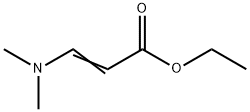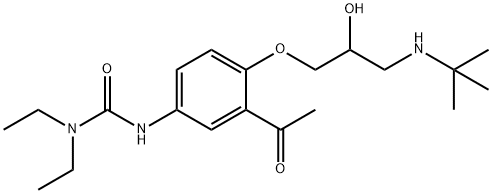3-Diethylaminopropylamine
Synonym(s):N,N-Diethyl-1,3-diaminopropane;N,N-Diethyl-1,3-propanediamine;1,3-Bis(ethylamino)propane;DEAPA
- CAS NO.:104-78-9
- Empirical Formula: C7H18N2
- Molecular Weight: 130.23
- MDL number: MFCD00008218
- EINECS: 203-236-4
- SAFETY DATA SHEET (SDS)
- Update Date: 2024-12-18 14:15:32

What is 3-Diethylaminopropylamine?
Chemical properties
clear colorless to slightly yellowish liquid
The Uses of 3-Diethylaminopropylamine
3-Diethylaminopropylamine is used as a solvent, extraction agents and organic synthesis intermediates, dyes, pigments, surface active agent.
The Uses of 3-Diethylaminopropylamine
Curing agent for epoxy resins, intermediate.
The Uses of 3-Diethylaminopropylamine
3-(Diethylamino)propylamine may be used in the preparation of:
- Biocompatible polyampholyte-coated (poly(acrylic acid)-co-3-(diethylamino)-propylamine magnetite nanoparticles (PAMNPs).
- Hyaluronic acid grafted with 3-diethylaminopropyl (DEAP) group (HA-g-DEAP) nanoparticles for use as a drug delivery vehicle.
- DEAPA-modified poly(vinyl alcohol) (PVA) polymers that can be employed in gene silencing.
General Description
A water-white liquid with a fishlike odor. Flash point 138°F. May be very irritating to skin and eyes. Used to make other chemicals and as a component of adhesives.
Air & Water Reactions
Flammable.
Reactivity Profile
3-Diethylaminopropylamine neutralizes acids in exothermic reactions to form salts plus water. May be incompatible with isocyanates, halogenated organics, peroxides, phenols (acidic), epoxides, anhydrides, and acid halides. Flammable gaseous hydrogen may be generated in combination with strong reducing agents, such as hydrides.
Hazard
Moderate fire risk. Irritant to skin.
Health Hazard
May cause toxic effects if inhaled or ingested/swallowed. Contact with substance may cause severe burns to skin and eyes. Fire will produce irritating, corrosive and/or toxic gases. Vapors may cause dizziness or suffocation. Runoff from fire control or dilution water may cause pollution.
Fire Hazard
Flammable/combustible material. May be ignited by heat, sparks or flames. Vapors may form explosive mixtures with air. Vapors may travel to source of ignition and flash back. Most vapors are heavier than air. They will spread along ground and collect in low or confined areas (sewers, basements, tanks). Vapor explosion hazard indoors, outdoors or in sewers. Runoff to sewer may create fire or explosion hazard. Containers may explode when heated. Many liquids are lighter than water.
Safety Profile
Moderately toxic by ingestion and skin contact. Corrosive to the eyes, skin, and mucous membranes. A sensitizer. See also AMINES. Flammable liquid when exposed to heat or flame; can react with oxidzing materials. To fight fire, use foam, CO2, dry chemical. When heated to decomposition it emits toxic fumes of NOx.
Properties of 3-Diethylaminopropylamine
| Melting point: | -60 °C |
| Boiling point: | 169-171 °C(lit.) |
| Density | 0.826 g/mL at 25 °C(lit.) |
| vapor density | 4.4 (vs air) |
| vapor pressure | 19.5 mm Hg ( 70 °C) |
| refractive index | n |
| Flash point: | 138 °F |
| storage temp. | Store below +30°C. |
| form | Liquid |
| pka | 10.32±0.25(Predicted) |
| color | Clear colorless to slightly yellow |
| Specific Gravity | 0.827 (20/4℃) |
| PH | 11.7 (10g/l, H2O, 20℃) |
| Odor | ammoniacal odor |
| explosive limit | 1.0%(V) |
| Water Solubility | MISCIBLE |
| Sensitive | Air Sensitive |
| BRN | 741879 |
| CAS DataBase Reference | 104-78-9(CAS DataBase Reference) |
| NIST Chemistry Reference | 1,3-Propanediamine, N,N-diethyl-(104-78-9) |
| EPA Substance Registry System | 1,3-Propanediamine, N,N-diethyl- (104-78-9) |
Safety information for 3-Diethylaminopropylamine
| Signal word | Danger |
| Pictogram(s) |
 Flame Flammables GHS02  Corrosion Corrosives GHS05  Skull and Crossbones Acute Toxicity GHS06 |
| GHS Hazard Statements |
H226:Flammable liquids H302:Acute toxicity,oral H311:Acute toxicity,dermal H314:Skin corrosion/irritation H317:Sensitisation, Skin H335:Specific target organ toxicity, single exposure;Respiratory tract irritation |
| Precautionary Statement Codes |
P210:Keep away from heat/sparks/open flames/hot surfaces. — No smoking. P233:Keep container tightly closed. P280:Wear protective gloves/protective clothing/eye protection/face protection. P301+P312:IF SWALLOWED: call a POISON CENTER or doctor/physician IF you feel unwell. P303+P361+P353:IF ON SKIN (or hair): Remove/Take off Immediately all contaminated clothing. Rinse SKIN with water/shower. P305+P351+P338:IF IN EYES: Rinse cautiously with water for several minutes. Remove contact lenses, if present and easy to do. Continuerinsing. |
Computed Descriptors for 3-Diethylaminopropylamine
New Products
(S)-3-Aminobutanenitrile hydrochloride 4-Methylphenylacetic acid N-Boc-D-alaninol N-BOC-D/L-ALANINOL Tert-butyl bis(2-chloroethyl)carbamate 3-Morpholino-1-(4-nitrophenyl)-5,6-dihydropyridin- 2(1H)-one Furan-2,5-Dicarboxylic Acid Tropic acid S-2-CHLORO PROPIONIC ACID ETHYL ISOCYANOACETATE 2-Bromo-1,3-Bis(Dimethylamino)Trimethinium Hexafluorophosphate 4-IODO BENZOIC ACID 3-NITRO-2-METHYL ANILINE 1-(2,4-DICHLOROPHENYL) ETHANAMINE (2-Hydroxyphenyl)acetonitrile 4-Bromopyrazole 5,6-Dimethoxyindanone 2-(Cyanocyclohexyl)acetic acid 4-methoxy-3,5-dinitropyridine 1-(4-(aminomethyl)benzyl)urea hydrochloride 2-aminopropyl benzoate hydrochloride diethyl 2-(2-((tertbutoxycarbonyl)amino) ethyl)malonate tert-butyl 4- (ureidomethyl)benzylcarbamate Ethyl-2-chloro((4-methoxyphenyl)hydrazono)acetateRelated products of tetrahydrofuran





![(-)-2-[METHYLAMINO]-1-PHENYLPROPANE](https://img.chemicalbook.in/CAS/GIF/33817-09-3.gif)


You may like
-
 N,N-Diethyl-1,3-propanediamine CAS 104-78-9View Details
N,N-Diethyl-1,3-propanediamine CAS 104-78-9View Details
104-78-9 -
 N,N-Diethyl-1,3-diaminopropane CAS 104-78-9View Details
N,N-Diethyl-1,3-diaminopropane CAS 104-78-9View Details
104-78-9 -
 3-Diethylamino-1-propylamine CAS 104-78-9View Details
3-Diethylamino-1-propylamine CAS 104-78-9View Details
104-78-9 -
 3-(Diethylamino)propylamine CAS 104-78-9View Details
3-(Diethylamino)propylamine CAS 104-78-9View Details
104-78-9 -
 1975-50-4 98%View Details
1975-50-4 98%View Details
1975-50-4 -
 2-HYDROXY BENZYL ALCOHOL 98%View Details
2-HYDROXY BENZYL ALCOHOL 98%View Details
90-01-7 -
 14714-50-2 (2-Hydroxyphenyl)acetonitrile 98+View Details
14714-50-2 (2-Hydroxyphenyl)acetonitrile 98+View Details
14714-50-2 -
 118753-70-1 98+View Details
118753-70-1 98+View Details
118753-70-1